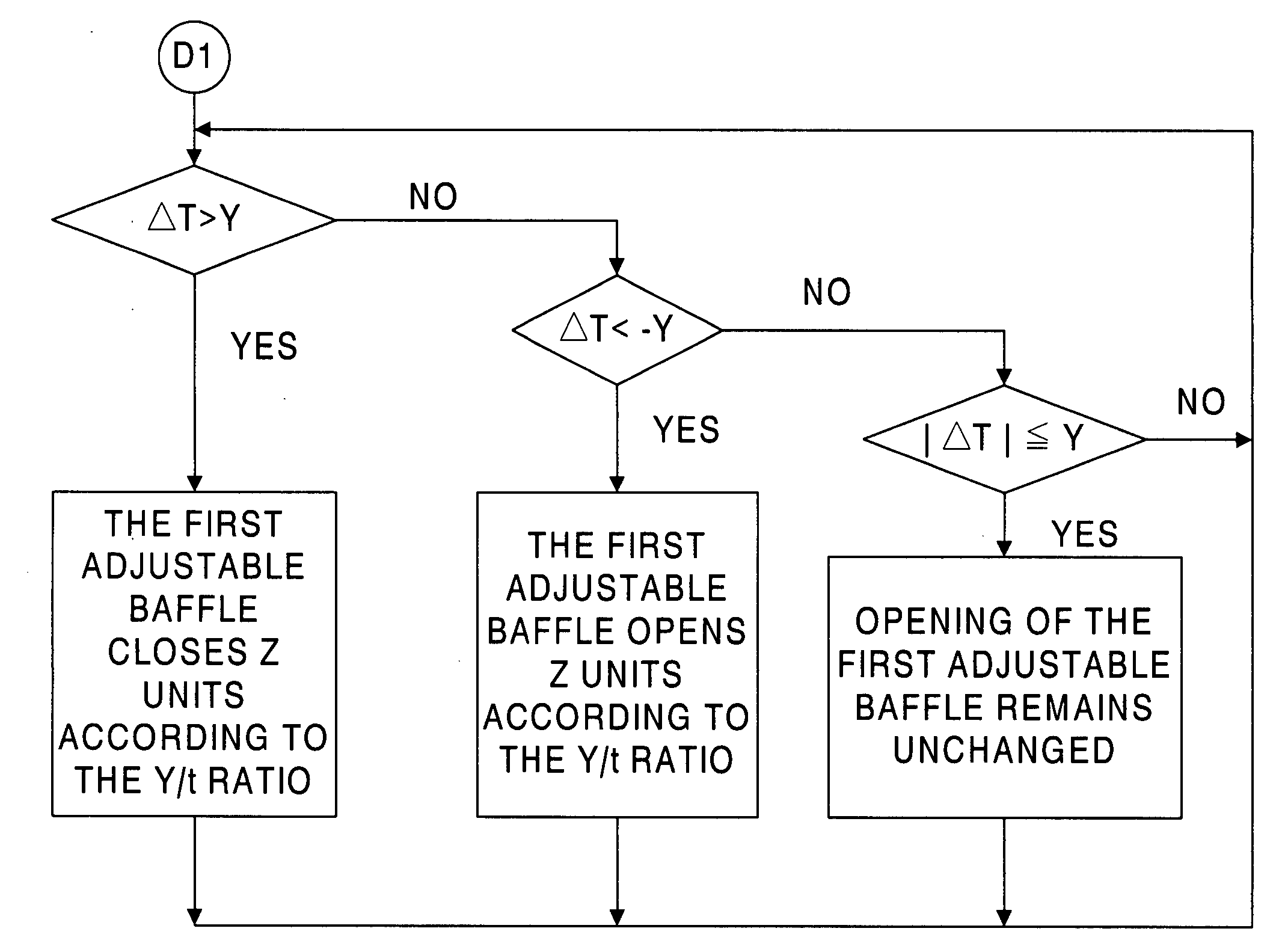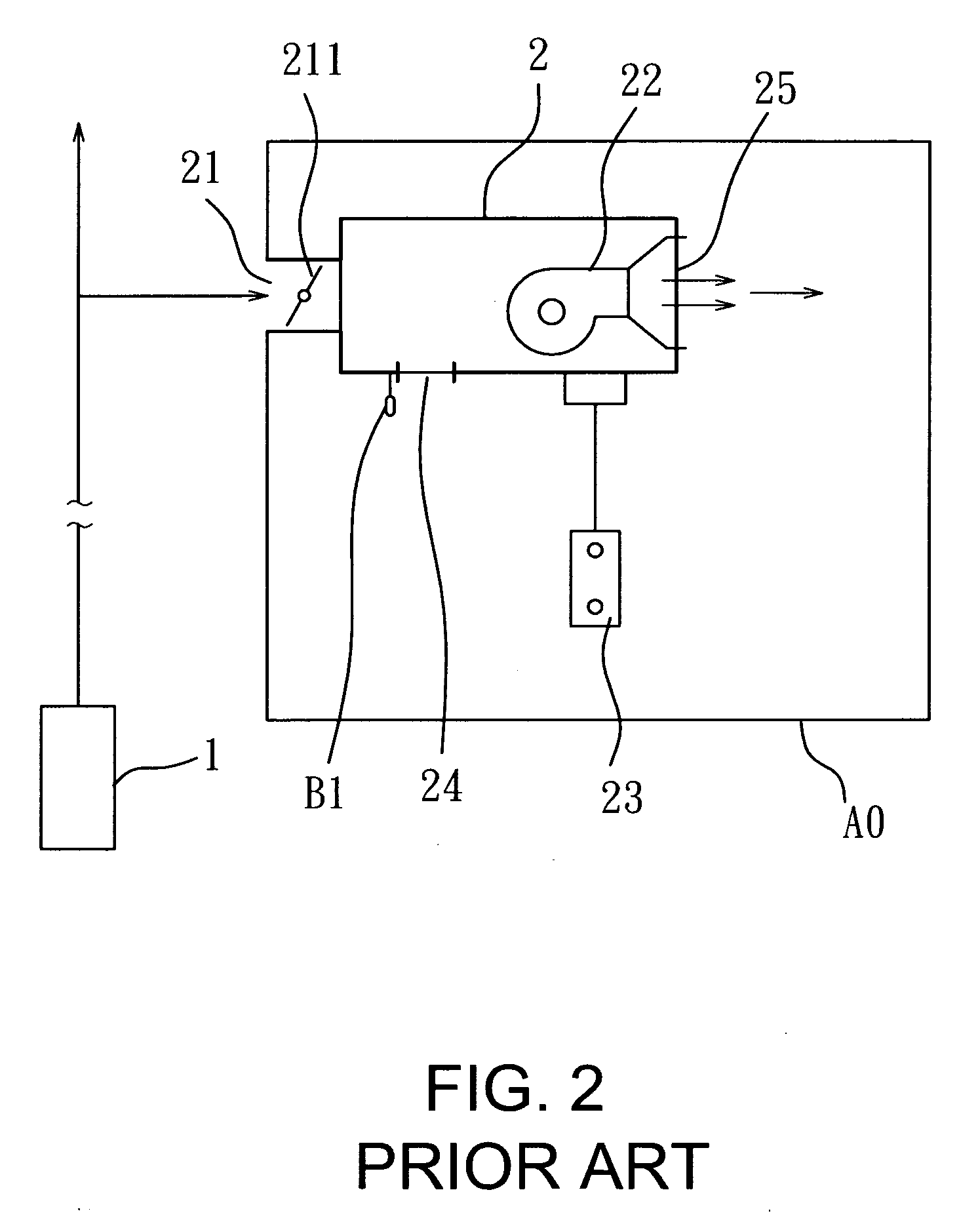Air conditioning system having a terminal chest to provide optimal airflow
a technology of airflow and air conditioning system, which is applied in the field of air conditioning system, can solve the problems of inability to achieve the desired goal, inability to meet the requirements of modern time, and difficulty in energy control, and achieve optimal airflow volume, energy saving, and optimal airflow
- Summary
- Abstract
- Description
- Claims
- Application Information
AI Technical Summary
Benefits of technology
Problems solved by technology
Method used
Image
Examples
second embodiment
[0044] Refer to FIG. 10 for the invention. Under the structure of the previous embodiment depicted in FIG. 3, a second heat source supply device 47 (47′) is provided on a rear side or front side of the air fan motor 42 (referring to FIG. 11). This aims to lower the temperature when the temperature of the air delivered by the first heat source supply device 3 is too high (in the warm air supply condition) without reducing first time airflow delivering volume. On the contrary, when the temperature of the air delivered by the first heat source supply device 3 is too low (in the cool air supply condition), the second heat source supply device 47 (47′) can raise the temperature.
third embodiment
[0045] Refer to FIG. 12 for the invention. It aims to prevent too low of humidity in the air conditioning area A. A moisturizer 48 is added in front of the second heat source supply device 47. When the humidity value in the air conditioning area A drops below a set humidity value, the moisturizer 48 is activated.
fourth embodiment
[0046] Refer to FIG. 13 for the invention. It is for a condition in which the first time air of the air conditioning is a VAV system. A first heat source supply system 6 provides required air conditioning (first time air), and a terminal chest 5 has an air vent 51 on the inlet that contains a second adjustable baffle 511. The second adjustable baffle 511 can be opened and adjusted as desired according to energy requirement of the air conditioning area A to control first time airflow volume of the air conditioning intake air. A fan motor 52 is provided to send the first time air to the air conditioning area A2 through an air outlet 55. The terminal chest 5 has a return air inlet 54 which has an adjustable cross section to provide second time return air. A setting face panel 53 is provided to set the temperature TS2 of the air conditioning area A2, and a temperature sensor B3 is provided to detect the ambient temperature TA2 of the air conditioning area A2. The return air inlet 54 has...
PUM
 Login to View More
Login to View More Abstract
Description
Claims
Application Information
 Login to View More
Login to View More - R&D
- Intellectual Property
- Life Sciences
- Materials
- Tech Scout
- Unparalleled Data Quality
- Higher Quality Content
- 60% Fewer Hallucinations
Browse by: Latest US Patents, China's latest patents, Technical Efficacy Thesaurus, Application Domain, Technology Topic, Popular Technical Reports.
© 2025 PatSnap. All rights reserved.Legal|Privacy policy|Modern Slavery Act Transparency Statement|Sitemap|About US| Contact US: help@patsnap.com



